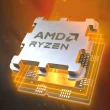Improving your Fortnite FPS (frames per second) on a PC can significantly enhance your gaming experience. High FPS ensures smoother gameplay, reduces lag, and can give you a competitive edge. If you’re struggling with low FPS, follow these tips to boost performance. While increasing your frame rate will not automatically make you a better player, it can help you with aiming and reaction times. A higher Fortnite FPS can also aid with the fluency of the game’s animation.
Adjust In-Game Settings
Fortnite offers various settings that you can tweak to enhance performance. Lowering the graphics settings can make a big difference. Start by setting the ‘Quality’ to low or medium. Disable ‘V-Sync’, ‘Motion Blur’, and ‘Anti-Aliasing’ if you don’t need them. Also, reduce the ‘View Distance’ to medium or low, as rendering distant objects can be taxing.
Use a High Refresh Rate Monitor
A monitor with a high refresh rate can make a significant difference. If your monitor supports 120Hz or higher, make sure you’re using it to its full potential. High refresh rate monitors display more frames per second, providing smoother gameplay. A 120Hz monitor can display up to a maximum of 120 frames per second. You may need to upgrade your monitor to reap the gaming and visual benefits of higher FPS.
Use a Wired Connection
If you’re playing on Wi-Fi, consider switching to a wired Ethernet connection. A wired connection is generally more stable and can reduce latency and packet loss. This improvement can indirectly help your FPS by ensuring a consistent and reliable connection.
Overclock Your GPU (Use Caution)
Overclocking your GPU can boost performance but comes with risks. Ensure you understand the process and use reliable software like MSI Afterburner. Start with minor adjustments to the GPU clock speed and test for stability. Monitor temperatures closely to avoid overheating, and be cautious to avoid damaging your hardware.
Adjust Windows Settings
Windows settings can affect your game’s performance. Disable ‘Game Mode’ and ‘Hardware Acceleration’ in applications like browsers. Go to ‘Settings’, select ‘Gaming’, and turn off ‘Game Mode’. Also, adjust visual effects by right-clicking ‘This PC’, selecting ‘Properties’, then ‘Advanced system settings’, and ‘Settings’ under ‘Performance’. Choose ‘Adjust for best performance’ to disable unnecessary visual effects.
Enable DirectX 12
Fortnite supports DirectX 12, which can offer performance improvements. Go to Fortnite’s settings, find the ‘Video’ tab, and set ‘DirectX Version’ to 12. This can reduce input latency and improve frame rates, particularly on newer GPUs
Adjust Fortnite’s Resolution Scale
In Fortnite, adjusting the ‘Resolution Scale’ can impact performance. Lowering the resolution scale reduces the graphical load on your PC. Try setting it to 80-90% for a balance between visual quality and performance.
By following these steps, you can effectively improve your Fortnite FPS on a PC. Make adjustments according to your specific hardware and preferences, and you should notice smoother gameplay and better overall performance.
Keep Your PC Cool
Keep your gaming computer cool. A PC that becomes too hot can cause your FPS to drop. If your PC shows signs of overheating, such as excessive fan noise and slow response, check the fans, ventilation, and CPU cooler for dust and good installation. Use software tools to monitor your PC’s temperatures. Tools like HWMonitor can help you keep track of CPU and GPU temperatures. High temperatures can cause thermal throttling, leading to lower FPS. If temperatures are high, consider improving your cooling solutions.
Optimise Your PC’s Power Settings
Windows power settings can affect performance. Set your PC to ‘High Performance’ mode. Go to ‘Control Panel’, select ‘Power Options’, and choose ‘High Performance’. This setting prevents your CPU and GPU from throttling down, ensuring they work at their full potential.
Close Background Applications
Running background applications can consume system resources and affect FPS. Before launching Fortnite, close unnecessary programmes. Check your task manager for resource-hungry apps and shut them down. This frees up memory and processing power for your game.
A smoother and more responsive game generally makes for a more enjoyable experience. It can reduce frustration and make the game more immersive and engaging. With a higher FPS, you’ll see and react to in-game events more quickly. This can give you an edge in competitive play, where milliseconds can make a difference in your performance. As game updates and new content are added, they might demand more from your system. Improving your FPS can help ensure that your setup remains capable of handling new updates effectively.








